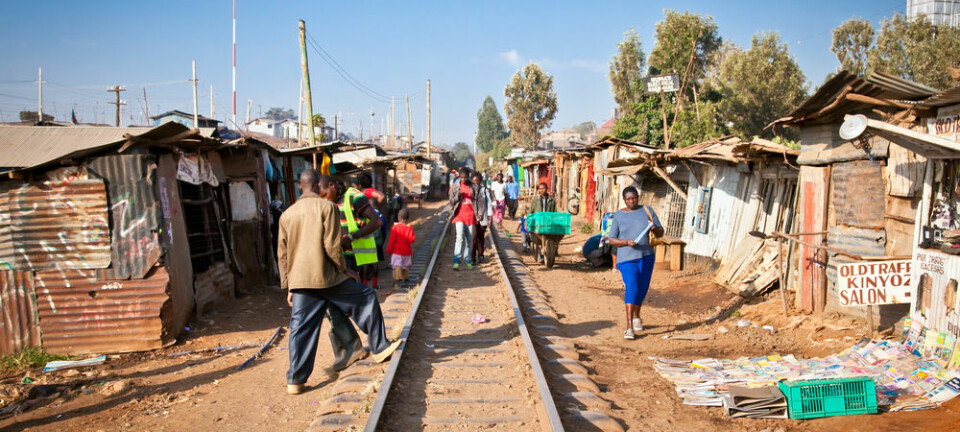
The least wealthy of Norwegian pensioners are worth millions
Even the humblest 20 percent of households of older Norwegians are good for about NOK 2 million each.
Most Norwegian real estate prices have just kept going up and up for decades – especially in the ever-growing Oslo region. Young people who are trying to get established here are hardest hit.
Where is all this wealth accumulating?
ScienceNordic’s partner forskning.no releases brand new figures here that show what sort of assets Norwegians in their 60s possess.
The actual market values of their homes and holiday huts are used here, rather than the considerably lower tax assessments that usually form the basis in statistical calculations of wealth.
Researchers Hans Christian Sandlie and Lars Gulbrandsen of the Oslo and Akershus University College (HiOA) and Norwegian Social Research (NOVA) have crunched the numbers.
Housing prices
“More and more of the elderly own their homes and the average sizes of these are also getting bigger,” says NOVA researcher Hans Christian Sandlie.
He confirms that what makes many in their 60s so wealthy is the value of their houses or flats.
But this segment of the elderly is not all that better off than the Norwegians born in the next decade (now aged 50 to 59), who also tend to have bulky assets, according to the calculations made by Sandlie and his colleagues.
“Many of the older home owners have owned their residences during a period of high rises in prices,” explains Sandlie. Many have also paid off all or much of their mortgages.
In addition to that advantage, 44 percent of Norwegians in their 60s also own their own holiday home or cabin.
It should not come as too much a surprise, then, that nearly half of all persons in Norway who pay wealth tax are over the age of 65, according to Statistics Norway (SSB).
Average of NOK 4.5 million
On average, a household consisting of persons in their 60s in Norway has total property or assets of nearly NOK 4.5 million, or about $525,000. These households generally consist of one or two persons.
The type of average used here by the NOVA researchers is the median, which is the number closest to the middle of the range. The median serves better than the mean average in analyses like this, claim many social scientists.
The figures we submit here are net assets. This is how much people own after subtracting any debts they might have.
Not real wealth
Norwegian wealth statistics, including those from Statistics Norway (SSB), have a tendency of making many Norwegians seem poorer than they actually are.
This is because official assessments are based on the numbers used for property or wealth taxation.
The values of Norwegians’ residences in assessments for taxes are only 25 percent of the presumed market values.
Ownership at 94 percent
A whopping 94 percent of all Norwegians over the age of 60 own their own residences. The share of the elderly who rent their homes or flats rather than own them has diminished.
The average size of these residences of the elderly has also grown. Among old people over the age of 80, 28 percent live in a house or flat with at least five rooms.
Nearly half of Norwegians aged 50-66 live in a home of at least five rooms.
Two residences
Actually, elderly Norwegians are even wealthier than the above figures reveal.
This is because some own a second residence which is not included in these statistics.
A total of 15 percent of Norwegians in the 60s have at least one extra home in addition to where they reside.
Some have little
The NOVA researcher points out that there are also some big gaps in assets among the elderly.
Although the lowest fifth in income of the population in their 60s has a median wealth of about $234,000, there are still many individuals in this age group with modest or no net assets to speak of.
“The lucky few”
The real estate market and housing prices have done more than anything else to create financial disparities among Norwegians in the past few decades.
This gap is mainly aligned with Norwegians’ ages.
Those who come out the best are those born in the 1940s and ‘50s and who established themselves in the housing market as young adults.
This is not just a Norwegian phenomenon.
International researchers use the term “the lucky few” about living conditions for the generation born during and WWII and the first post-war years.
Many of these baby boomers have large personal assets and their real estate is a key component.
The most unfortunate today are the young adults born in the 1990s who, in terms of ownership, have yet to get a foot inside housing market.
Sources:
The numbers in this article have been taken from the newly published report “Eldres boligsituasjon” [The elderly population’s housing situation], written by researchers at NOVA.
More about these findings will be found in an article yet unpublished by Hans Christian Sandlie and Lars Gulbrandsen.
-------------------------------------
Read the Norwegian version of this article at forskning.no
Translated by: Glenn Ostling































